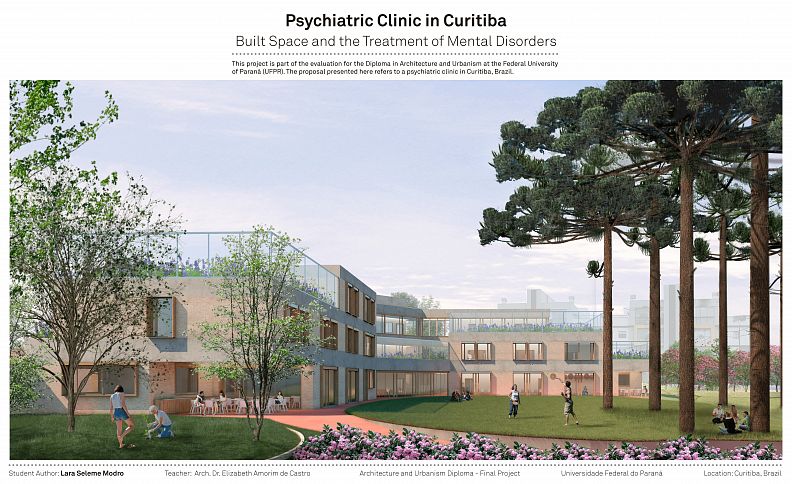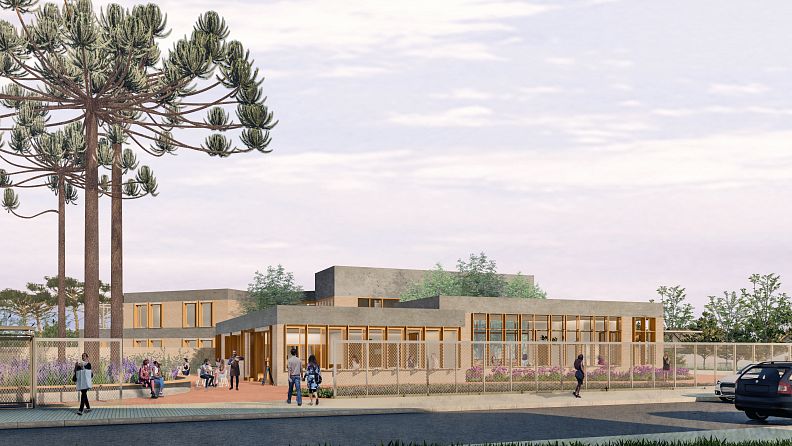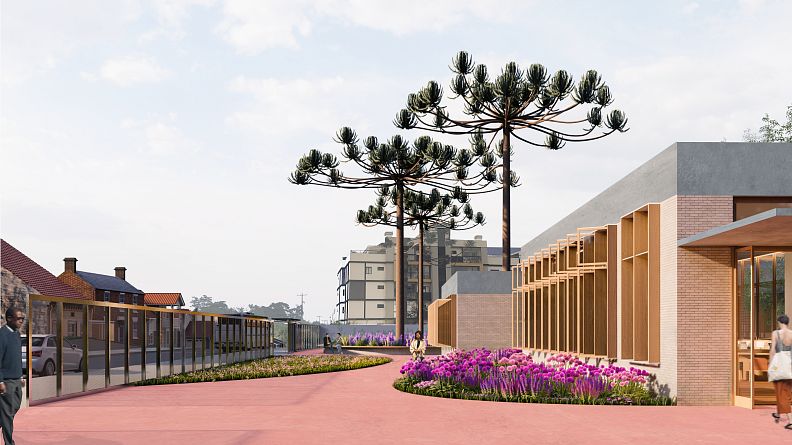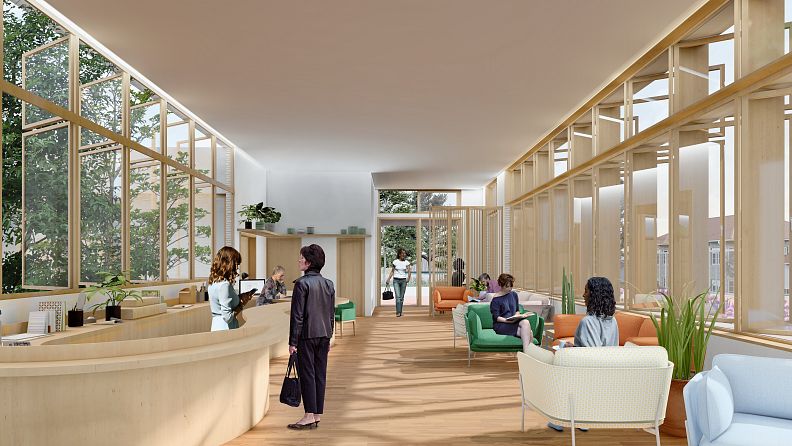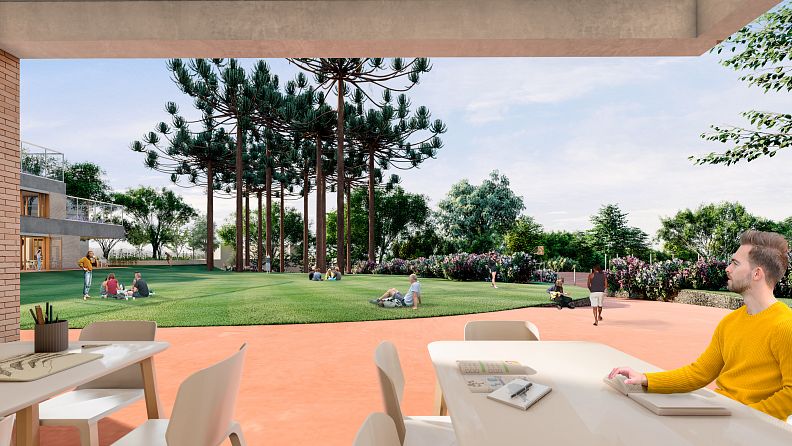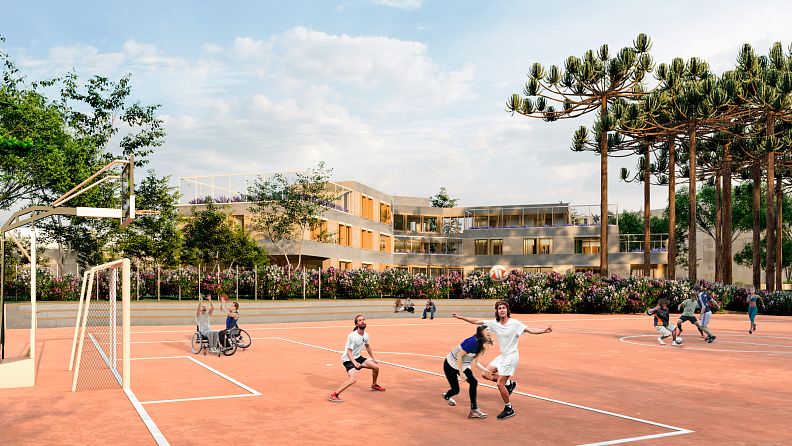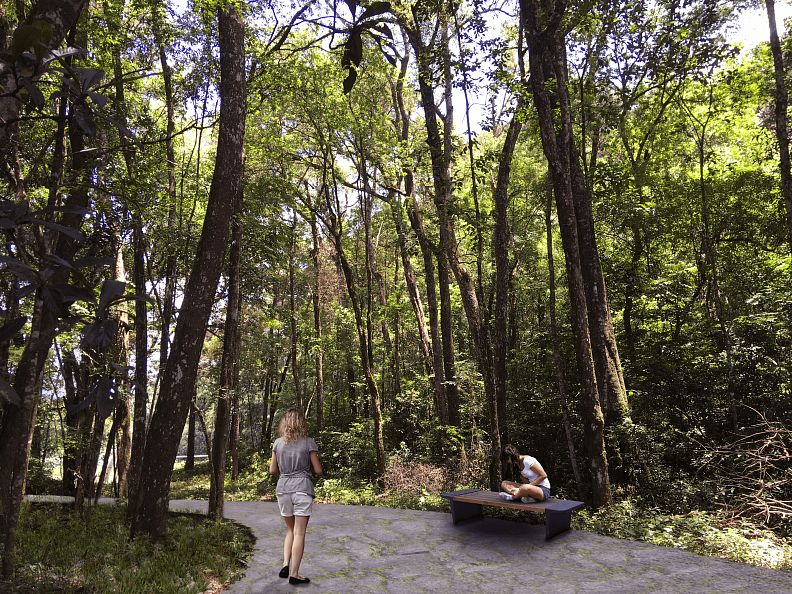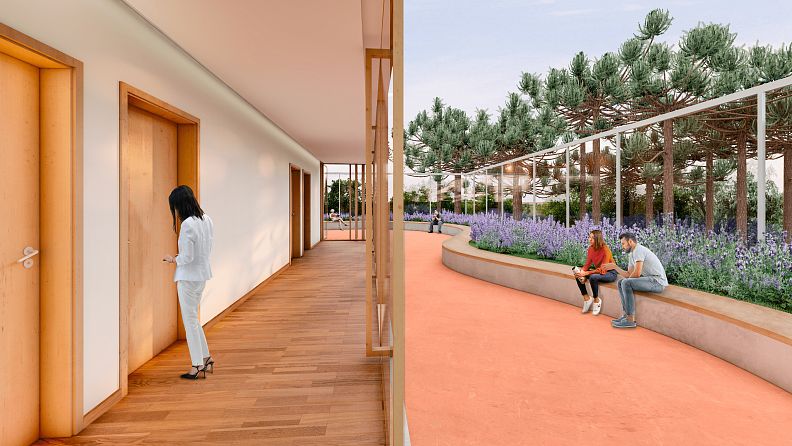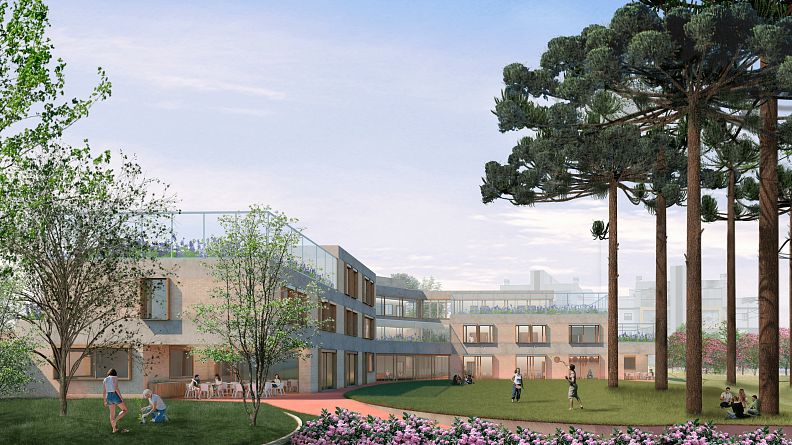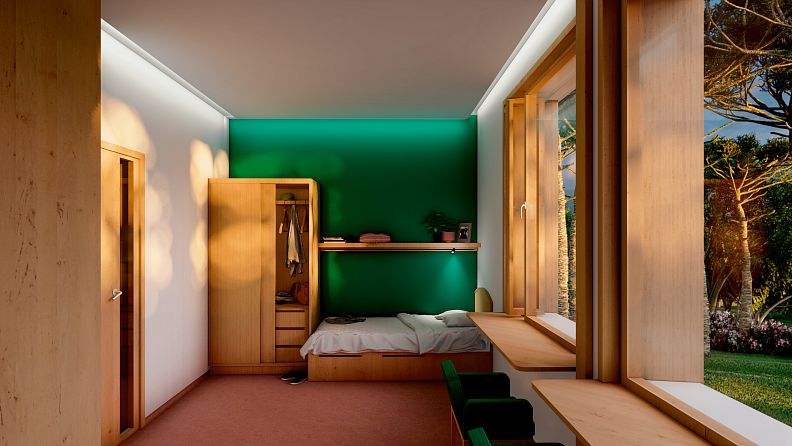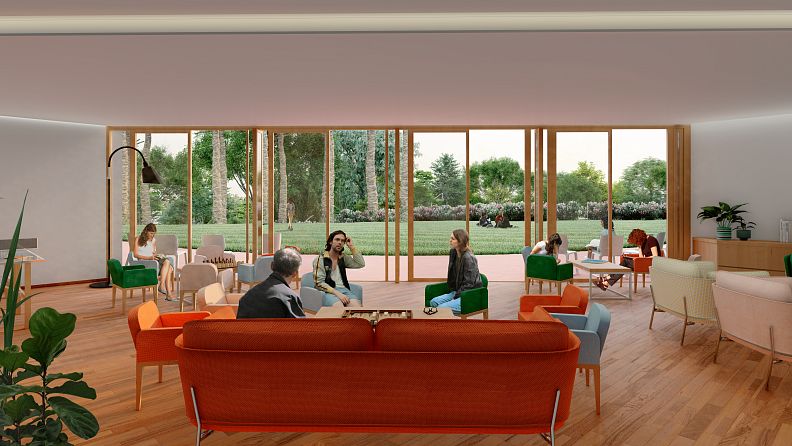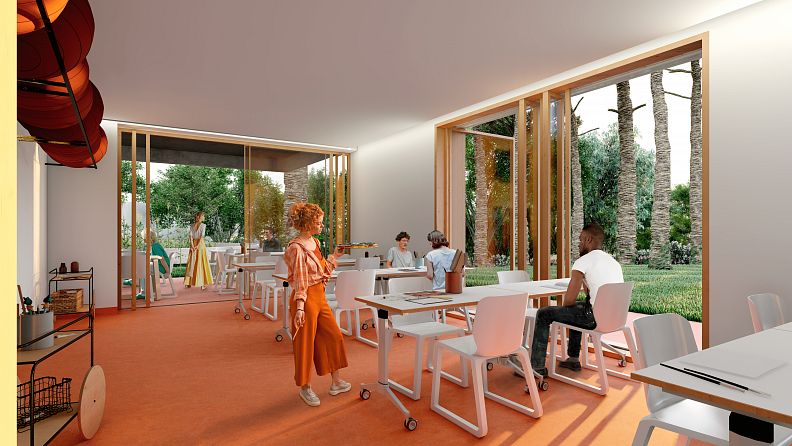Psychiatric Clinic in Curitiba

Idea projektu
This project is part of the evaluation for the Diploma in Architecture and Urban Design at the Federal University of Paraná (UFPR). The proposal presented here refers to a psychiatric clinic in Curitiba, Brazil.
This topic was chosen aiming to bring attention to the great deficit in psychiatric treatment in Brazil.
After the Brazilian Psychiatric Reform, asylum institutions were banned, as they reinforced the patient's exclusion. In addition, psychiatric hospitals were closed and replaced by services integrated into society. However, there was no complete replacement of closed beds. In 2002 there were approx. 30 psychiatric beds/100,000 inhabitants in Brazil. In 2018, this number dropped to 12.32 beds/100,000 inhabitants. The World Health Organization sees as acceptable a number of 45 beds/100,000 inhabitants.
This deficit generated an overcrowding of emergency services, with patients waiting for vacancies for psychiatric care, in addition to an erroneous migration of people with severe mental disorders to the prison population and to the condition of homeless people. This increased the rates of chemical dependency, disability, unemployment and suicide.
Regarding the local reality, Curitiba has 28 psychiatric beds/100,000 inhabitants. This is above the national average, but still below the recommended numbers. Despite of that, 92% of the existing beds are located in Psychiatric Hospitals, most of them far from the city, in segregated environments, in disagreement with the guidelines of the Psychiatric Reform. Furthermore, all the existent psychiatric clinics in Curitiba are located in adapted residential properties. This brings them closer to a domestic scale, but causes problems of universal accessibility, safety against suicide and the adaptations limit the performance of therapeutic practices. This panorama highlights the need to expand psychiatric beds, in spaces designed specifically for the treatment of mental disorders, which justifies the realization of this project.
Popis projektu
The project’s shape is a direct answer to the site’s conditions. It follows the alignment of the buildings and the streets on its surroundings, opening up towards the native woods of the site and adapting to the solar condition. From all of that derives its Y shape. This brings exceptional views of the nature to the rooms and therapy areas, which are considered to be very positive to the treatment of mental disorders.
Furthermore, the building follows the topography of the site. Thus, it is divided in three floors, with its main entrance being in the middle one (level zero), at the same level as the street. On that floor, are allocated the reception, the triage rooms, a learning cafe (opened to the public, bringing the society closer to the clinic’s environment) and the night sector. This facilitates logistics issues by being at the same level as the ambulance entrance. On the upper floor (level +1) there are the offices and on the ground floor (level -1) there are some service areas, the therapy rooms, the main living room and the cafeteria. The ground floor (level -1) is at the same level as the clinic’s garden (due to the site’s descendent condition), this way it has openings leveled to the exterior, expanding its area, as well as the therapeutical possibilities.
In relation to the room’s dimensions and the building sectorization, the project follows the guidelines in the Brazilian Federal Laws for psychiatric clinics aimed at the adult public. But beyond what is defined in the legislation, to deepen the understanding of how the built space can contribute to the treatment of mental disorders, interviews were carried out with healthcare professionals, patients and architects who have already designed psychiatric clinics; in addition to a bibliographical review and analysis of buildings related to the theme.
Considering what was studied, two key issues were perceived as of major importance in the project: the suicide prevention and the creation of a therapeutical environment. While the first one mainly includes the protection against falls, strangulation and the need to have strong and safe furniture; the second one aims to bring normality to the space. This is achieved by stimulating the patient’s autonomy and creating an opened and dignifying treatment spaces, that do not relate to a hospital atmosphere. This way, both characteristics are sometimes opposite to each other, resulting in a need to balance them in the building. Along the selected drawings (see pdfs) there are captions explaining how those topics were approached in the project.
Technické informace
Project name: Psychiatric Clinic in Curitiba
Location: Curitiba, Brazil
Function: Healthcare building
Floors: 3 + technical area
Building area: about 3.000m² (gross area)
Structural system: concrete column-beam system with concrete simple slabs for spans up to six meters and ribbed slabs in the largest spans.
Main building materials: concrete (structure); bricks (walls); wood (doors, floors and window frames); glass; rock wool and rigid expanded polystyrene foam (insulation); carton board (ceiling finishing).
Dokumentace
Show PDF 1Show PDF 2Show PDF 3Show PDF 4Show PDF 5Show PDF 6Show PDF 7
